
|
|
|
 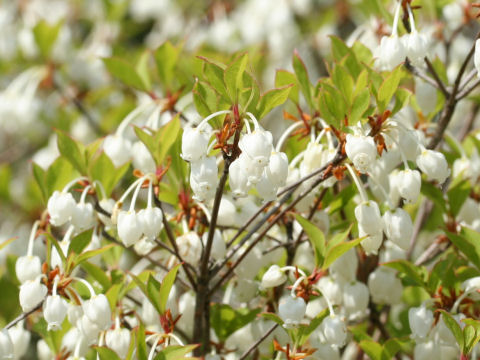 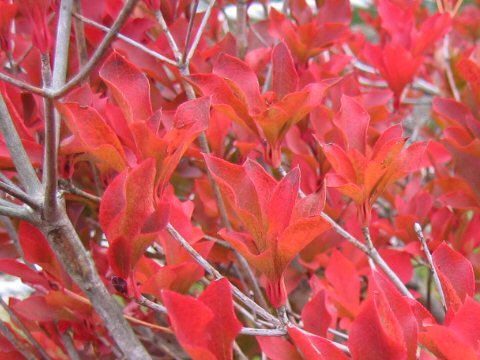 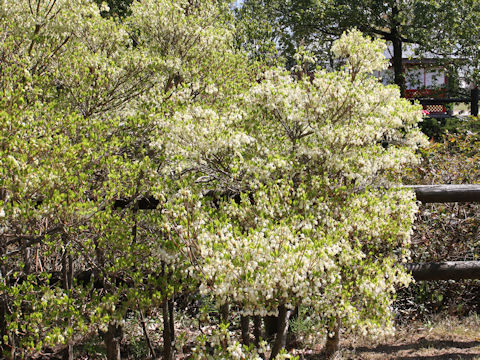 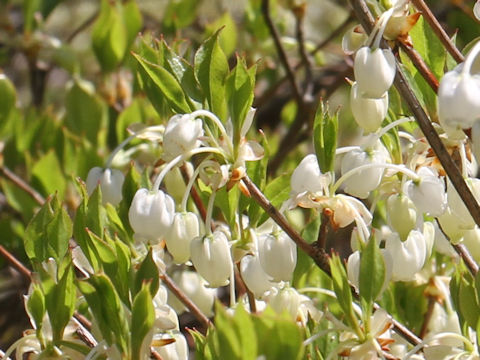  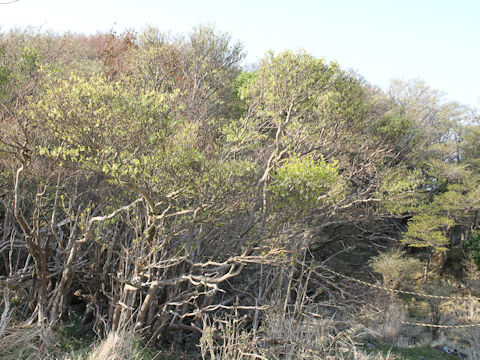 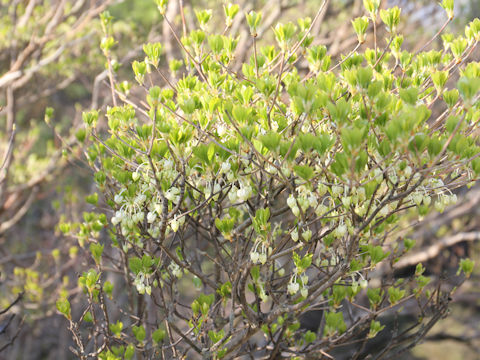  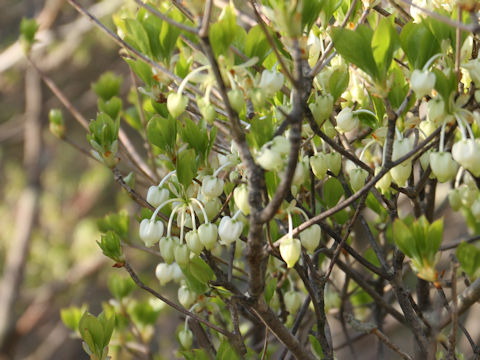  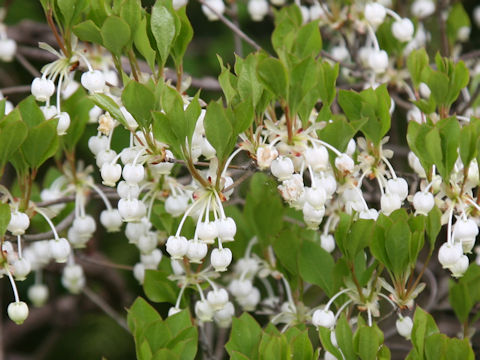  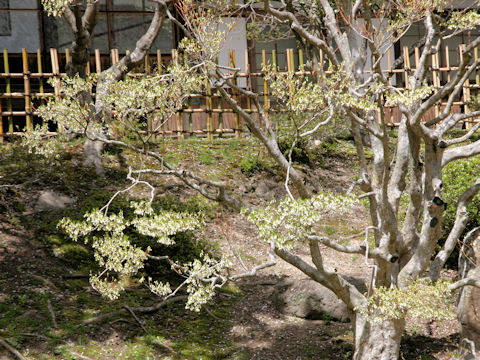 |
|
|
|
わが国の本州、伊豆半島以西から四国・九州、それに台湾に分布しています。山地の蛇紋岩地帯に生え、高さは1〜3メートルになります。葉は倒披針形で互生し、先端が尖ります。4月から5月ごろ、新葉とともに、枝先に小さい白いベル状の花を咲かせます。「どうだん」の和名は、枝ぶりが灯台(台座の上に一本の竿を立て、その上に油皿をのせたもの)の脚に似ていることから。「満天星」と表記されることもあります。台湾華語では「台湾吊鐘花」。 |
|
|
ツツジ科ドウダンツツジ属の落葉低木で、学名は Enkianthus perulatus。英名は Japanese enkianthus。 |
|
|
The Japanese enkianthus (Enkianthus perulatus) belongs to Eriaceae (the Azalea family). It is a small deciduous tree that is distributed from the Izu Peninsula of Honshu west to Shikoku, Kyushu in Japan, and Taiwan. It grows on serpentine rocks in mountainous areas and grows 1 to 3 m high. It produces small white bell-shaped flowers at the tips of its branches along with new leaves from April to May. The Japanese name "灯台" (doudan) comes from its branching pattern, which resembles the legs of a lighthouse (a pole on a pedestal with an oil pan on top). It is also sometimes written as "満天星". In Taiwanese, it is called "台灣吊鐘花". |
|
|
[上・中1] 静岡県浜松市「浜名湖花博」にて、2004年04月11日撮影。 [中2] 岐阜県郡上市高鷲町「牧歌の里」にて、2004年10月30日撮影。 [中3〜中5] 富山県砺波市「砺波チューリップ公園」にて、2017年04月23日撮影。 [中6〜中9] 大分県別府市「鶴見岳」にて、2018年04月27日撮影。 [中10・中11] 宮城県川崎町支倉にて、2022年04月29日撮影。 [中12・下] 宮城県松島町松島「瑞巌寺」にて、2023年04月13日撮影。 |

|
|
Shu Suehiro |